Transform your indoor air quality with these seven efficient air-purifying plants that won't overtake your space. Snake Plants and Spider Plants use minimal root systems to remove toxins like formaldehyde and xylene, while Peace Lilies and Chinese Evergreens thrive with shallow, adaptable roots. Pothos, ZZ Plants, and Philodendrons round out your options with their compact root structures and powerful filtration abilities. Let's explore how these green powerhouses can maximize your home's air quality.
Air-Purifying Snake Plants: Masters of Minimal Root Space
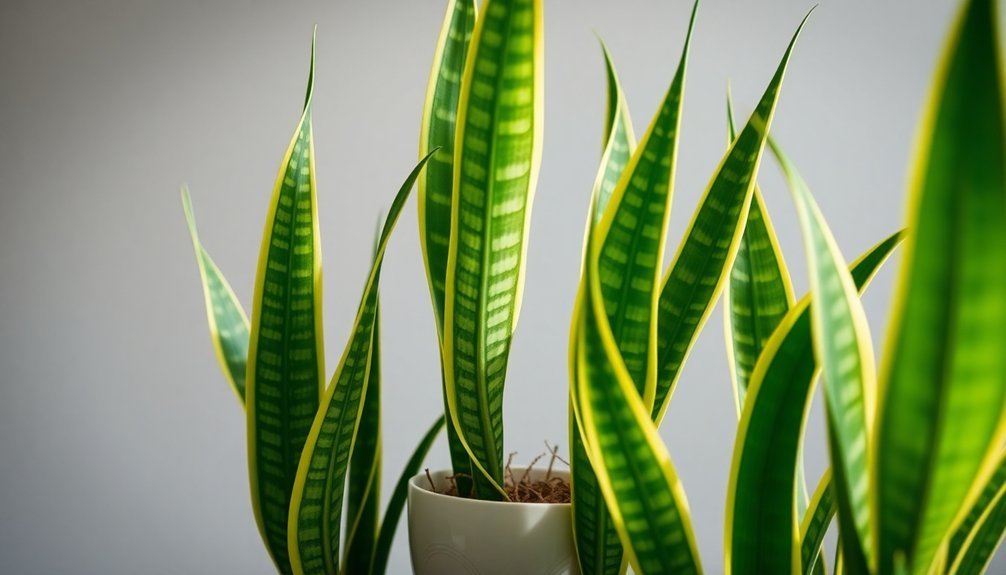
While most houseplants demand ample root space, snake plants stand out as remarkable air purifiers that flourish in compact containers. You'll find their shallow root system perfectly adapted to small planters, making them ideal for tight indoor spaces where other plants might struggle.
These efficient air-purifying champions use their unique CAM photosynthesis to absorb toxins like formaldehyde, xylene, and toluene while releasing oxygen at night.
Their roots demonstrate exceptional adaptability across various soil types, efficiently capturing nutrients even in less-than-ideal conditions. You won't need to worry about frequent watering either – their drought-tolerant nature means they'll thrive with minimal attention.
This combination of shallow roots and hardy characteristics makes snake plants perfect for anyone seeking powerful air purification in space-conscious environments.
Compact Spider Plants for Enhanced Oxygen Exchange
Despite their small footprint, compact spider plants pack a powerful punch when it comes to air purification and oxygen production. Their efficient root systems maximize root respiration rates while requiring minimal space, making them perfect for small indoor environments.
You'll find these adaptable plants excel at removing harmful pollutants like formaldehyde and xylene, while their shallow root biomass prevents overcrowding in confined pots.
The plants' ability to produce multiple offspring, or "pups," means you can easily increase your oxygen exchange potential without sacrificing space.
To optimize your spider plant's performance, place it in bright, indirect sunlight and maintain a moderate watering schedule.
Their resilient nature means you won't need to fuss over them constantly, yet they'll continue to enhance your indoor air quality through consistent oxygen exchange and pollutant removal.
Peace Lily's Efficient Root Breathing System
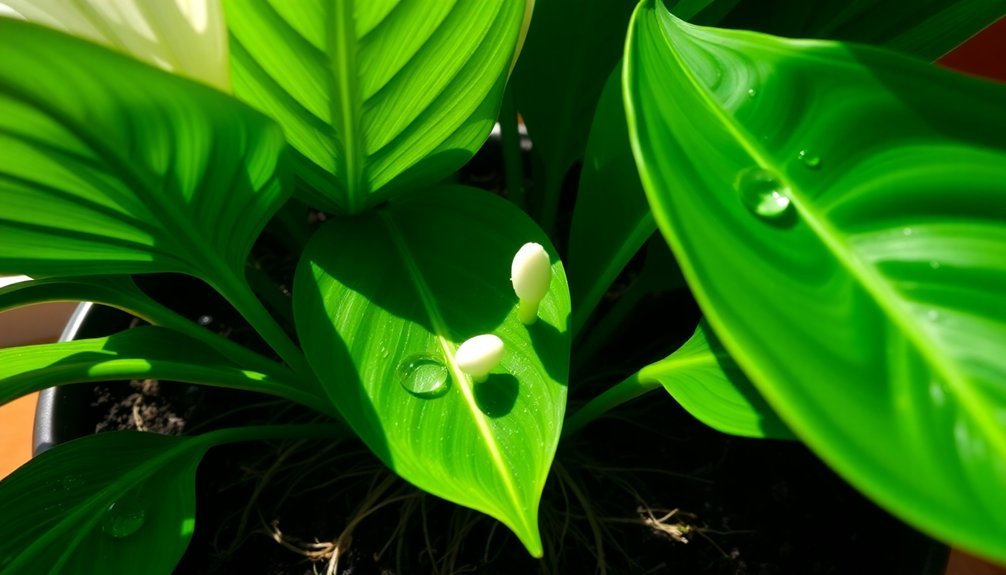
The Peace Lily's fibrous root system operates like a sophisticated breathing apparatus, allowing you to grow this air-purifying plant in various soil depths while maintaining ideal oxygen exchange.
You'll find its specialized aerenchyma tissue enables efficient gas exchange even in compacted soil, making it an ideal choice for indoor environments where root disturbance should be minimal.
The plant's small, adaptable roots work effectively in low-light conditions and need only moderate soil depth to perform their dual function of nutrient uptake and air filtration.
Root Structure And Function
Beneath the graceful leaves of Peace Lilies lies a remarkably efficient root system that's perfected the art of breathing.
You'll find their shallow, fibrous roots expertly designed for maximum soil respiration and nutrient uptake in challenging environments.
The Peace Lily's root structure showcases nature's brilliant engineering through:
- Compact design that optimizes oxygen absorption even in low-light conditions
- Dense network of root hairs that maximize surface area for nutrient capture
- Specialized aerenchyma tissue that enhances gas exchange
- Efficient root respiration capabilities that support healthy foliage and blooming
- Strategic shallow growth pattern that minimizes competition with other plants
These adaptations make your Peace Lily a master of survival, allowing it to thrive where other plants might struggle.
Its root system's efficiency in gas exchange and nutrient absorption demonstrates remarkable evolutionary adaptation.
Oxygen Absorption Mechanisms
Inside your Peace Lily's intricate root network lies a sophisticated oxygen absorption system that rivals nature's most efficient designs. Your plant's specialized roots create tiny air pockets in the soil, maximizing oxygen concentration even in challenging conditions like waterlogged environments.
You'll find that your Peace Lily's fine root structure plays an essential role in its breathing process. These delicate roots boast an extensive surface area that's perfectly adapted for enhanced gas exchange and root respiration.
What's particularly fascinating is how your plant's roots engage in rhizosphere interactions with soil microorganisms, creating a dynamic ecosystem that optimizes oxygen absorption.
This efficient system guarantees your Peace Lily can convert stored energy into growth, even when oxygen is limited, making it one of nature's most adaptable houseplants.
Soil Depth Requirements
While many houseplants demand deep soil for their roots, your Peace Lily thrives with just 6 to 12 inches of well-draining potting mix. This shallow root system has evolved to maximize root respiration and nutrient absorption in tropical environments where soil temperature remains stable.
Your Peace Lily's roots grow efficiently in these conditions, making it perfect for container gardening. To guarantee peak growth, maintain:
- Well-draining soil that prevents waterlogging
- Consistent moisture levels without oversaturation
- Proper soil temperature through indoor placement
- Adequate nutrients in the top layer of soil
- Regular monitoring of root health
These requirements reflect your Peace Lily's natural adaptation to tropical environments, where shallow roots efficiently absorb oxygen and nutrients. This makes them ideal for indoor growing, where they'll flourish without demanding deep containers.
Chinese Evergreen's Adaptable Root Network
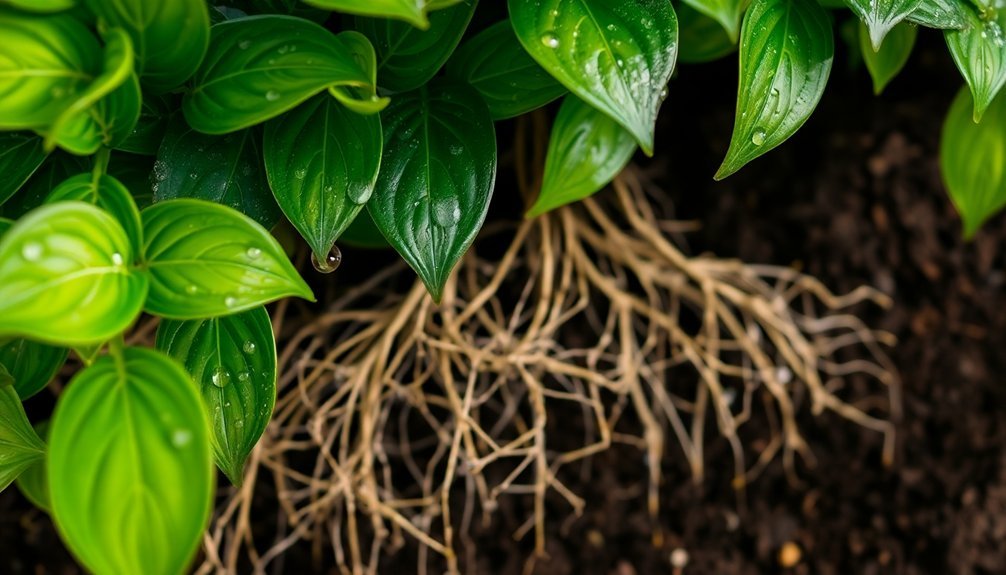
Thanks to their remarkable root system, Chinese Evergreens have become a favorite among both novice and experienced plant enthusiasts. Their shallow, fibrous roots efficiently absorb water and nutrients while adapting to various soil conditions, making them perfect for both indoor and outdoor settings.
You'll find these adaptable plants can thrive in low-light areas, which means they don't need extensive root growth to gather nutrients like other houseplants do.
What's even more impressive is their ability to handle different moisture levels – their roots won't suffer significant damage during drought or if you accidentally overwater. The secret to their success lies in their partnership with mycorrhizal fungi, which helps their roots enhance nutrient absorption and builds resilience.
This unique root network makes Chinese Evergreens a reliable choice for any growing environment.
Pothos: Small Roots With Maximum Air Filtration
Pothos's fast-growing aerial roots don't just help it climb – they're highly efficient air purifiers that can transform your indoor environment.
You'll find these small but mighty roots actively filtering out common household toxins like formaldehyde and benzene, while requiring minimal space and maintenance.
Even in low-light conditions, your Pothos will keep working as a natural air purifier, making it an ideal choice for any room in your home or office.
Fast-Growing Aerial Roots
Despite their compact size, Pothos plants pack a powerful punch when it comes to air purification through their remarkable aerial root system. These fast-growing roots can extend up to 12 inches, helping your plant absorb nutrients and moisture directly from the air around you.
- Aerial roots can develop within 1-2 weeks when propagating in water
- Root systems efficiently filter out harmful toxins like formaldehyde
- They'll reduce airborne pollutants by up to 90% in just 24 hours
- Roots adapt easily to various lighting conditions, from low to bright indirect
- You can maximize air purification by placing plants at different heights
Your Pothos will continuously develop new aerial roots, creating an ever-expanding natural air filtration system.
This remarkable ability, combined with their small root structure, makes them perfect for improving indoor air quality while taking up minimal space.
Effortless Indoor Air Purification
When it comes to indoor air purification, few plants match the efficiency of Pothos's compact root system.
You'll be amazed at how this small-rooted powerhouse removes up to 90% of harmful indoor toxins within just 24 hours, thanks to its higher respiration rates and specialized root exudates that enhance microbial biomass in the soil.
You don't need a green thumb to benefit from Pothos's air-cleaning abilities.
It thrives in low-light conditions and adapts quickly to various indoor environments, making it perfect for your home or office.
Whether you choose to display it in hanging baskets or wall planters, its minimal root system won't compromise its remarkable air purification capabilities.
ZZ Plant's Drought-Resistant Root Structure
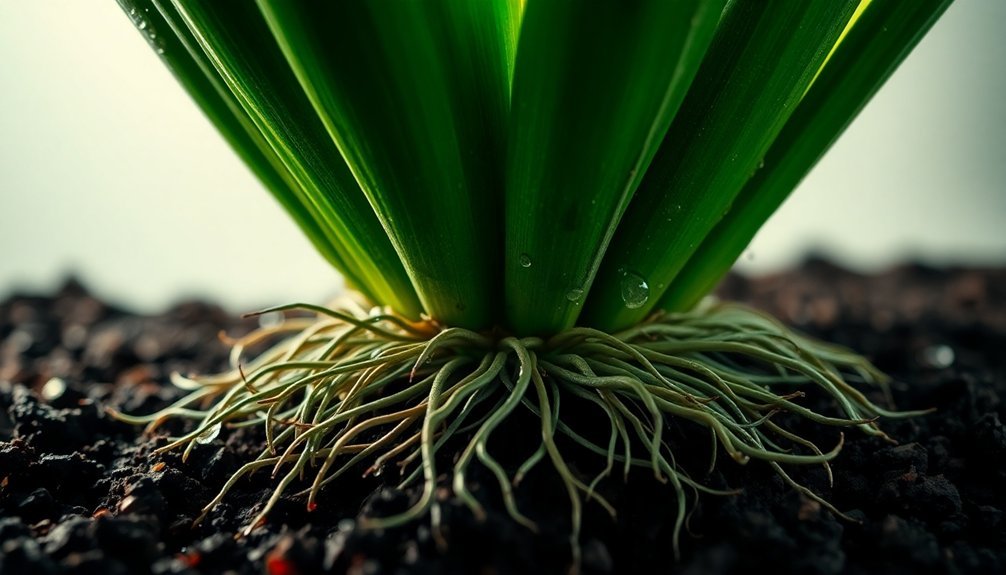
The ZZ plant's remarkable survival abilities stem from its specialized root structure, featuring thick, fleshy rhizomes that act like nature's water tanks. Through efficient root respiration and carbon cycle management, you'll find this plant thrives even when neglected.
Its unique root turnover system creates an adaptable network that maximizes drought resistance in challenging conditions.
- Shallow-growing roots spread horizontally to capture surface moisture
- Rhizomes store water and nutrients for extended dry periods
- Adaptive root system performs well in low-light environments
- Can survive weeks without watering due to stored resources
- Low-maintenance structure perfect for busy plant parents
You'll appreciate how the ZZ plant's sophisticated root system makes it an ideal choice for indoor spaces where regular care isn't always possible.
Its self-sufficient nature guarantees consistent growth even when you're unable to maintain a strict watering schedule.
Philodendron's Space-Saving Root Development
As nature's master of spatial efficiency, philodendrons have evolved a remarkable root system that makes them perfect for compact living spaces. Their shallow root systems maximize root respiration while minimizing the need for deep soil. You'll find their root tissue expertly designed to thrive in confined areas without compromising their ability to absorb water and nutrients.
| Root Feature | Benefit |
|---|---|
| Fibrous Structure | Quick adaptation to environment |
| Aerial Roots | Moisture capture from air |
| Shallow System | Efficient space utilization |
| Limited Spread | Reduced plant competition |
What makes philodendrons particularly special is their dual approach to nutrient gathering. While their ground roots efficiently extract nutrients from minimal soil, their aerial roots can supplement this by drawing moisture from the surrounding air, ensuring ideal growth even in space-restricted environments.
Frequently Asked Questions
What Plants Have Small Root Systems?
You'll find that ferns, groundcovers like Ajuga, bulbs such as Muscari, drought-tolerant plants, and perennials like Geranium cantabrigiense all have small root systems that won't disturb surrounding plants.
What Plants Have Breathing Roots?
You'll find breathing roots in mangrove species like Avicennia and Rhizophora, as well as some wetland grasses and sedges. These plants use specialized root structures called pneumatophores to survive in waterlogged environments.
Can Some Plants Breathe Through Their Roots?
Yes, you'll find that some plants can breathe through their roots using special structures called lenticels. They're able to absorb oxygen directly from soil or water to support essential root respiration processes.
What Plant Has the Deepest Root System?
You'll find the mesquite tree (Prosopis spp.) has the deepest root system, reaching up to 50 feet deep. It's an impressive plant that's evolved to search extensively for water in arid conditions.
In Summary
Ready to breathe easier? You'll find that these seven plants deliver powerful air-purifying benefits without demanding excessive space for their roots. Whether you choose the hardy snake plant or the adaptable pothos, you're making a smart choice for cleaner indoor air. Start with one or mix several varieties – your home's air quality will improve while your plants thrive in their space-efficient containers.
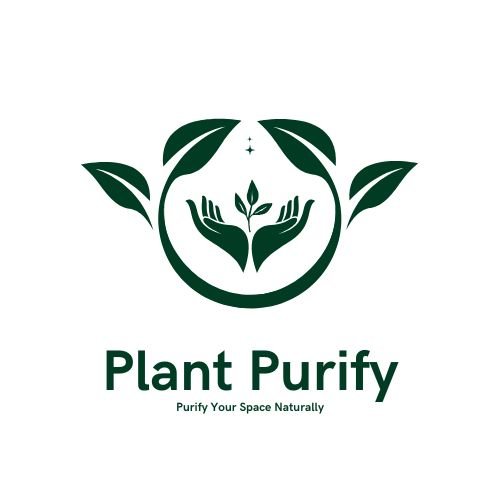

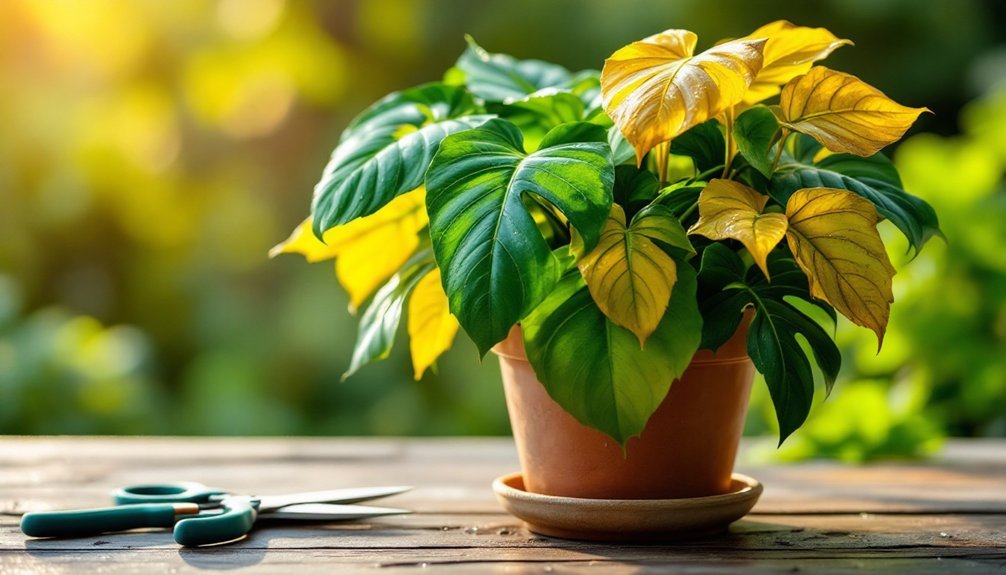


Leave a Reply